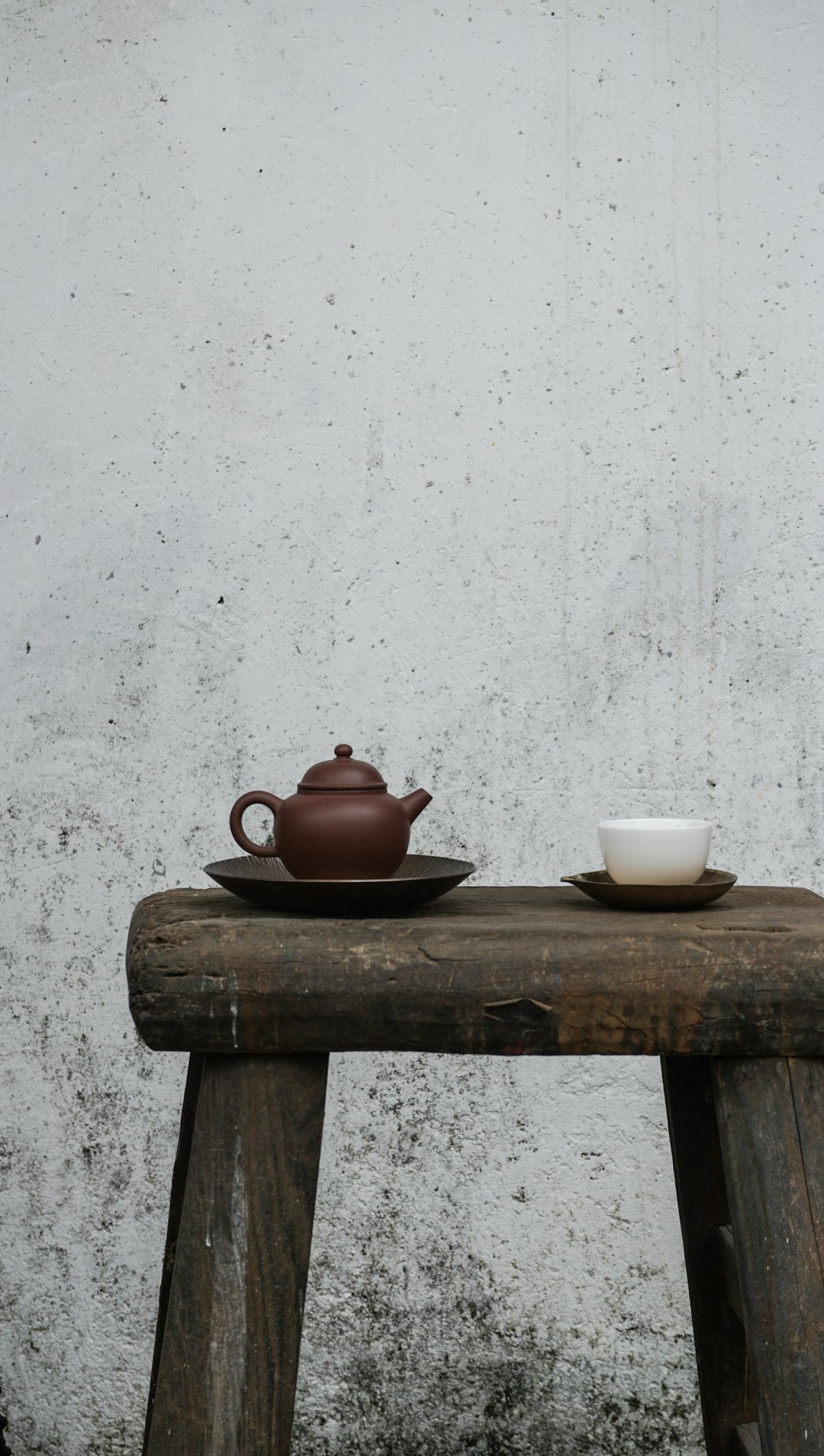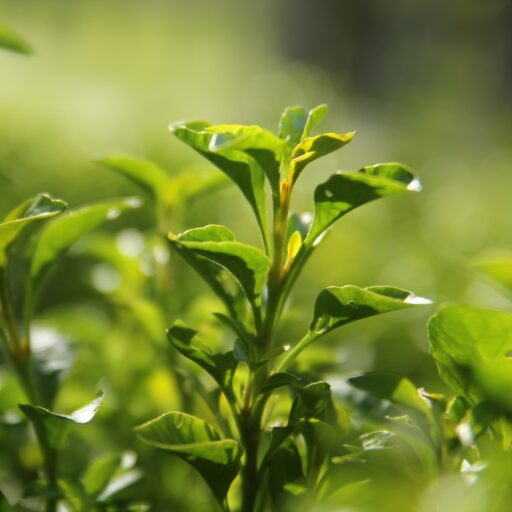Support our educational content for free when you purchase through links on our site. Learn more
15 Creative Tea Garden Ideas for Small Spaces 🌿

Are you dreaming of sipping fresh herbal tea brewed from your very own garden, but feel limited by your small space? Fear not! In this article, we’re diving into 15 innovative tea garden ideas that will transform even the tiniest balcony or windowsill into a lush oasis of flavor and fragrance. Imagine plucking vibrant leaves of peppermint or chamomile right outside your door—sounds delightful, doesn’t it?
Did you know that growing your own tea can not only save you money but also provide a fresh, organic alternative to store-bought options? With the right herbs and a sprinkle of creativity, you can cultivate a thriving tea garden that fits your lifestyle and space constraints. So, grab your gardening gloves and let’s explore how you can make your tea dreams a reality!
Key Takeaways
- Start Small: You don’t need a large garden; even a few pots can yield delightful herbs for tea.
- Choose the Right Herbs: Opt for easy-to-grow varieties like peppermint, chamomile, and lemon balm.
- Get Creative with Containers: Use items like mason jars, old teacups, or hanging baskets to maximize your space.
- Utilize Vertical Gardening: Make the most of your area by growing upwards with wall planters and trellises.
- Harvest Regularly: Snipping your herbs encourages growth and keeps your plants healthy.
Ready to start your tea garden journey? 👉 Shop for herb seeds and containers to kick off your gardening adventure today! 🌱
Table of Contents
- Quick Tips and Facts
- The Art of Tea Gardening in Small Spaces
- Essential Herbs for Your Cozy Tea Garden
- Creative Container Ideas for Tea Plants
- Vertical Gardening: Maximizing Your Space
- Companion Planting: Boosting Your Tea Garden
- Soil and Sunlight: The Perfect Tea Garden Conditions
- Watering Wisely: Keeping Your Tea Plants Happy
- Harvesting and Using Your Homegrown Tea
- Meet Our Contributor: Mary Plantwalker
- Want to Take a Deeper Dive into Medicinal Herbs and Their Uses?
- Pursue Your Dreams of a Tea Garden!
- 7 Inspiring Thoughts on Growing Your Own Herbal Tea Garden
- Conclusion
- Recommended Links
- FAQ
- Reference Links
Quick Tips and Facts
- Start Small: You don’t need a sprawling garden! A few pots on your windowsill or balcony can yield delightful herbs for your tea. 🌱
- Choose the Right Herbs: Opt for easy-to-grow varieties like peppermint, chamomile, and lemon balm. These herbs thrive in small spaces and are perfect for tea! 🍵
- Use Containers: Get creative with containers! Old teacups, mason jars, or even hanging baskets can serve as stylish homes for your tea plants. 🏺
- Sunlight is Key: Most tea herbs love sunlight. Ensure your plants get at least 6 hours of direct sunlight daily. ☀️
- Water Wisely: Overwatering is a common mistake. Ensure your pots have drainage holes and only water when the top inch of soil feels dry. 💧
- Regular Harvesting: Regularly snip your herbs to encourage growth and prevent them from becoming leggy. ✂️
The Art of Tea Gardening in Small Spaces
Creating a tea garden in a small space is not only possible but also incredibly rewarding! At Growing Teas™, we believe that even the tiniest balcony or windowsill can be transformed into a lush tea haven.
Why Grow Your Own Tea?
- Freshness: Homegrown herbs offer a vibrancy that store-bought tea bags simply can’t match. 🌿
- Customization: You can mix and match your favorite flavors, creating unique blends tailored to your taste.
- Health Benefits: Many tea herbs have medicinal properties, contributing to overall wellness. Check out our article on the Health Benefits of Tea for more insights!
Essential Herbs for Your Cozy Tea Garden
Here’s a list of must-have herbs that are perfect for your small tea garden:
| Herb Name | Flavor Profile | Growing Conditions | Height |
|---|---|---|---|
| Peppermint | Refreshing, minty | Full sun, well-drained | 1 ft (30 cm) |
| Chamomile | Light, floral | Full sun, average soil | 1.5 ft (45 cm) |
| Lemon Balm | Citrusy, calming | Full sun, moist soil | 2 ft (60 cm) |
| Holy Basil | Sweet, spicy | Full sun, warm climate | 1-2 ft (30-60 cm) |
| Anise Hyssop | Licorice-like | Full sun, well-drained | 1-2 ft (30-60 cm) |
Growing Tips
- Peppermint: This herb is a vigorous grower, so plant it in a pot to prevent it from taking over your garden! 🌱
- Chamomile: Start seeds indoors and transplant them after the last frost. They love full sun and will reward you with beautiful flowers! 🌼
- Lemon Balm: This herb is a perennial, meaning it will come back year after year. Perfect for a low-maintenance garden! 🌞
Creative Container Ideas for Tea Plants
Let’s get crafty! Here are some fun container ideas to make your tea garden pop:
- Mason Jars: Perfect for herbs like chamomile and lemon balm. They add a rustic charm to your space! 🥫
- Old Teacups: Upcycle those mismatched teacups into adorable planters for mint or anise hyssop. ☕
- Hanging Baskets: Ideal for trailing herbs like thyme or oregano. They save space and look fabulous! 🌸
Container Care Tips
- Ensure your containers have drainage holes to prevent root rot.
- Use a quality potting mix that retains moisture but drains well.
- Group pots together to create a mini-garden effect! 🌿
Vertical Gardening: Maximizing Your Space
When space is limited, think up! Vertical gardening is a fantastic way to maximize your small area. Here’s how to do it:
Vertical Gardening Techniques
- Wall Planters: Use wall-mounted planters to grow herbs like basil and chives. They’re easy to access and look stunning! 🖼️
- Trellises: Install a trellis for climbing herbs like peas or cucumbers. They’ll add height and interest to your garden. 🌿
- Hanging Pots: Suspend pots from hooks or beams to create a floating herb garden. Perfect for thyme and oregano! 🌈
Companion Planting: Boosting Your Tea Garden
Companion planting is a wonderful way to enhance your tea garden’s health and productivity. Here are some pairings to consider:
- Basil and Tomatoes: Basil can improve the flavor of tomatoes while repelling pests. 🍅
- Mint and Cabbage: Mint deters cabbage moths, making it a great companion for your vegetable garden! 🥬
- Lemon Balm and Peppers: Lemon balm attracts pollinators, which can help your pepper plants thrive. 🌶️
Benefits of Companion Planting
- Pest Control: Natural deterrents can reduce the need for chemical pesticides.
- Improved Growth: Some plants can enhance each other’s growth when planted together.
- Biodiversity: A diverse garden attracts beneficial insects and improves soil health. 🌍
Soil and Sunlight: The Perfect Tea Garden Conditions
The foundation of a successful tea garden lies in the soil and sunlight. Here’s what you need to know:
Soil Requirements
- Well-Drained Soil: Most tea herbs prefer soil that drains well. Consider adding perlite or sand to improve drainage. 🌱
- Nutrient-Rich: Use organic compost to enrich your soil. This will provide essential nutrients for your herbs. 🌿
Sunlight Needs
- 6 Hours of Sunlight: Most tea herbs thrive in full sun, so choose a location that receives at least 6 hours of sunlight daily. ☀️
- Partial Shade: Some herbs, like mint, can tolerate partial shade, making them versatile for different garden spots. 🌤️
Watering Wisely: Keeping Your Tea Plants Happy
Watering is crucial for your tea garden’s success. Here are some tips to keep your plants thriving:
Watering Techniques
- Check Soil Moisture: Before watering, check the top inch of soil. If it feels dry, it’s time to water! 💧
- Water Deeply: When you water, do so deeply to encourage deep root growth. This helps your plants withstand dry spells. 🌊
- Avoid Overwatering: Too much water can lead to root rot. Ensure your pots have drainage holes to prevent this. ❌
Harvesting and Using Your Homegrown Tea
Once your tea herbs are thriving, it’s time to enjoy the fruits of your labor! Here’s how to harvest and use your homegrown tea:
Harvesting Tips
- Morning Harvest: Harvest your herbs in the morning after the dew has evaporated for the best flavor. 🌅
- Regular Snipping: Regularly snip your herbs to encourage bushier growth. This also prevents them from flowering too soon. ✂️
Brewing Your Tea
- Simple Brew: For a basic herbal tea, steep 1-2 teaspoons of dried herbs in hot water for 5-10 minutes. 🍵
- Experiment with Blends: Mix different herbs for unique flavors! Try combining peppermint and chamomile for a soothing blend. 🌼
Meet Our Contributor: Mary Plantwalker
Mary Plantwalker is a passionate herbalist and tea enthusiast who has spent years cultivating her own tea garden. She believes that everyone can enjoy the benefits of homegrown tea, no matter the size of their space. With her extensive knowledge and hands-on experience, Mary shares her insights to inspire others to embark on their tea-growing journey. 🌿
Want to Take a Deeper Dive into Medicinal Herbs and Their Uses?
If you’re curious about the medicinal properties of herbs, check out our articles on Herbal Tea Planting and DIY Tea Blending. You’ll discover how to harness the power of herbs for your health and wellness! 🌱
Pursue Your Dreams of a Tea Garden!
Now that you’re equipped with all this knowledge, it’s time to get started on your very own tea garden! Whether you have a small balcony or just a sunny windowsill, you can create a thriving space filled with your favorite tea herbs. Remember, the journey of growing your own tea is as rewarding as the tea itself! 🌼
7 Inspiring Thoughts on Growing Your Own Herbal Tea Garden
- Start Small: Every great garden begins with just a few pots. 🌱
- Experiment: Don’t be afraid to try new herbs and blends! 🎉
- Connect with Nature: Gardening is a wonderful way to reconnect with the earth. 🌍
- Share Your Harvest: Gift your friends and family with your homegrown tea! 🎁
- Learn Continuously: Every season brings new lessons in gardening. 📚
- Enjoy the Process: Gardening is as much about the journey as it is about the destination. 🌿
- Sip and Savor: Enjoy the fruits of your labor with a cup of your own tea! ☕
Now that you’re armed with all this information, it’s time to roll up your sleeves and start your tea gardening adventure! Happy growing! 🌱
Conclusion

Creating a tea garden in small spaces is not just possible; it’s a delightful journey filled with fresh flavors and fragrant herbs! 🌿 From choosing the right herbs to maximizing your space with creative containers and vertical gardening techniques, you now have all the tools you need to cultivate your very own tea haven.
Summary of Key Points
- Positives: Growing your own tea offers freshness, customization, and health benefits. You can enjoy vibrant flavors that store-bought teas simply can’t match. Plus, it’s a rewarding hobby that connects you with nature!
- Negatives: It requires some initial investment in pots, soil, and seeds, and there’s a learning curve involved in understanding each plant’s needs. However, the joy of sipping your own homegrown tea far outweighs these minor challenges!
We confidently recommend diving into your tea gardening adventure. Start small, experiment, and enjoy the process. You’ll find that every cup of tea brewed from your own garden is a celebration of your hard work and creativity! 🍵
Recommended Links
-
👉 Shop Tea Gardening Supplies:
- Herb Seeds: Peaceful Valley Farm Supply | Amazon
- Containers: Amazon | Walmart
- Gardening Tools: Etsy | Home Depot
-
Books on Tea Gardening:
FAQ

How can I create a tea garden in a small backyard or patio?
Creating a tea garden in a small backyard or patio is all about maximizing your space. Start by selecting a sunny spot that receives at least 6 hours of sunlight daily. Use containers to grow your herbs, as they can be easily moved and arranged to fit your space. Consider vertical gardening techniques, such as wall planters or hanging pots, to utilize vertical space effectively. Choose herbs that thrive in small spaces, like peppermint, chamomile, and lemon balm.
What are the best tea plants for small space gardens and containers?
The best tea plants for small space gardens include:
- Peppermint: Easy to grow and can thrive in containers.
- Chamomile: Compact and beautiful, perfect for sunny spots.
- Lemon Balm: A perennial that returns year after year.
- Holy Basil: Offers a unique flavor and is great for warm climates.
- Anise Hyssop: Attracts pollinators and is perfect for small gardens.
These herbs are not only flavorful but also easy to maintain, making them ideal for small spaces.
Read more about “Can I Grow Tea Plants in Containers? 10 Essential Tips for Thriving Tea Gardens! 🌱”
How do I design a compact tea garden with limited space and budget?
To design a compact tea garden on a budget, start by using recycled containers like old teacups, mason jars, or even plastic bottles. Group your pots together to create a mini-garden effect. Choose a few key herbs that you love and focus on those, rather than trying to grow everything at once. Utilize vertical space with wall-mounted planters or hanging baskets. Lastly, consider starting from seeds, which is often more cost-effective than buying established plants.
What are some low-maintenance tea garden ideas for small spaces with shade or partial sun?
For small spaces with shade or partial sun, consider these low-maintenance tea herbs:
- Mint: Thrives in partial shade and is very forgiving.
- Lemon Balm: Can tolerate some shade and is easy to grow.
- Chamomile: While it prefers full sun, it can adapt to partial shade.
- Anise Hyssop: Grows well in various conditions and attracts pollinators.
These herbs require less direct sunlight and are generally hardy, making them perfect for low-maintenance gardens.
Reference Links
- Chestnut Herbs: How to Grow an Herbal Tea Garden
- Traditional Cooking School: Growing Herbs for Tea in Small Spaces
- The Herbal Academy: How to Grow Your Own Tea Garden + Helpful Harvesting Tips
- Mountain Rose Herbs: Nettle Benefits
With these resources and insights, you’re well on your way to enjoying the delightful experience of growing and sipping your own tea! 🌱🍵

